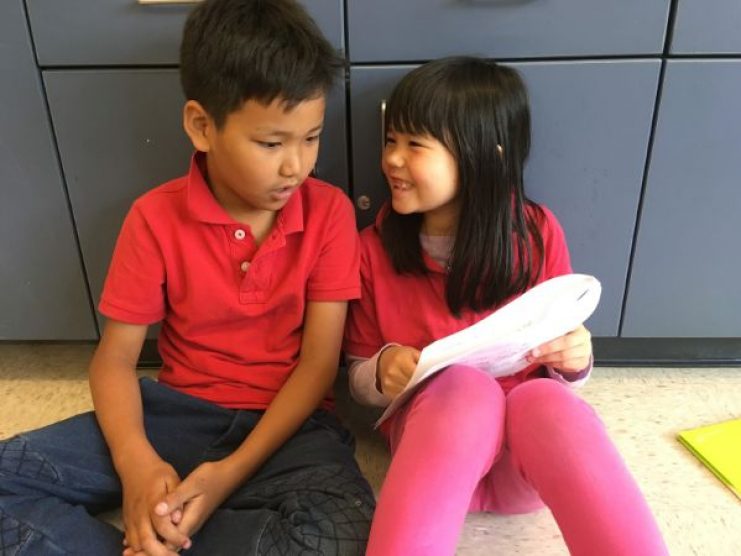
Creating Tools to Monitor Small Groups in Reading Workshop
I teach 5th grade literacy at Montalvin Manor in West Contra Costa. My school’s inquiry focus was intervention this year. I chose to think about reading intervention specifically and using different strategies in small groups to support students. This felt really important to me because I my students’ writing overall was a strength. Only 12% were below the standard in the writing domain on SBAC last year.
While writing was a strength, reading was an area of growth. At the beginning of the year, only 24% of my students were reading at grade level, according to STAR Reading, and 50% were in the bottom quartile of students. There were four 1st grade readers, thirteen 2nd grade readers, and twelve 3rd grade readers. I knew that working with these students in an intervention capacity would be necessary to support their the gains they need to make.
Going into this inquiry process, I pulled consistent small groups with lower-performing students, while balancing conferences and check-ins with higher-performing students. I wanted clear systems to make the process routine and to help make the skills transferable to their own independent books. The indicators I looked for were basic reading skills: decoding, fluency, and comprehension.
One thing that I really appreciated about the inquiry work was how we were encouraged to experiment and try new things. My action steps throughout the year, after sharing my data with my group and collaborating with them, included implementing word work through 2nd grade level Words Their Way, fluency passages, phonics practice, different types of groupings, experimenting with tracking systems and scheduling, and then eventually expanding some of my strategies to the whole class.
Through this inquiry I gathered data about my student’s reading skills in a number of ways: I tracked STAR reading data quarterly, analyzed their independent reading, administered running records, took notes in conferences and small groups, filmed students reading aloud, and took videos of them completing and explaining the various intervention activities we did, including word sorts. This gave me different lenses for student growth. Each time I tried a new data collection strategy, I noticed something new. Rewatching the students read aloud highlighted the differences between decoding and fluency challenges as did the running records data. Analyzing the quiz scores showed me who needed to be pushed and where I could leverage school/home partnerships.
One of my aha’s came to me when I saw that “intervention” was not one-size-fits-all and low readers were low readers for vastly different reasons. The students I was doing most of the work with could be divided into two general groups – focus on decoding and focus on comprehension. Running records really helped me make this distinction and see very clearly where their needs were.
While this intervention work focused on the students who needed the most improvement, I didn’t want my other students to lose out on small group work. Through my conferences, I realized that my higher performing students were actually less articulate at talking about their reading and thinking work. While many of my lower performing readers were so used to my question, “What are you working on as a reader?” many of my higher performing students seemed confused and just said, “reading longer books” or “getting AR points.” I needed to balance more. I tried to leave my small group with an independent task (word sort, tracking words they don’t know and solving strategies, finding spelling patterns in their books, etc.) and then use some time to have a couple of other conferences.
Overall I saw a lot of growth. One of my focal students, who barely read at the beginning of the year, became an avid reader. We had an art visit one day where students painted anything they wanted and this student chose to paint a scene from Magic Tree House and presented it to the class. Another student told me what happened in her chapter book each day because she was so engaged, something that didn’t happen before. Now, over 30% of students are at grade level along with one 1st grade reader, seven 2nd grade readers, and twelve 3rd grade readers.
My next questions are: How have people balanced all components of intervention? How do you balance independent practice and intervention? What other tools have people used?
Jessie Welcomer is a Mills Teacher Scholar and 5th grade teacher at Montalvin Manor in West Contra Costa. She first presented this story at the 2019 Teacher Inquiry in Action Forum.
